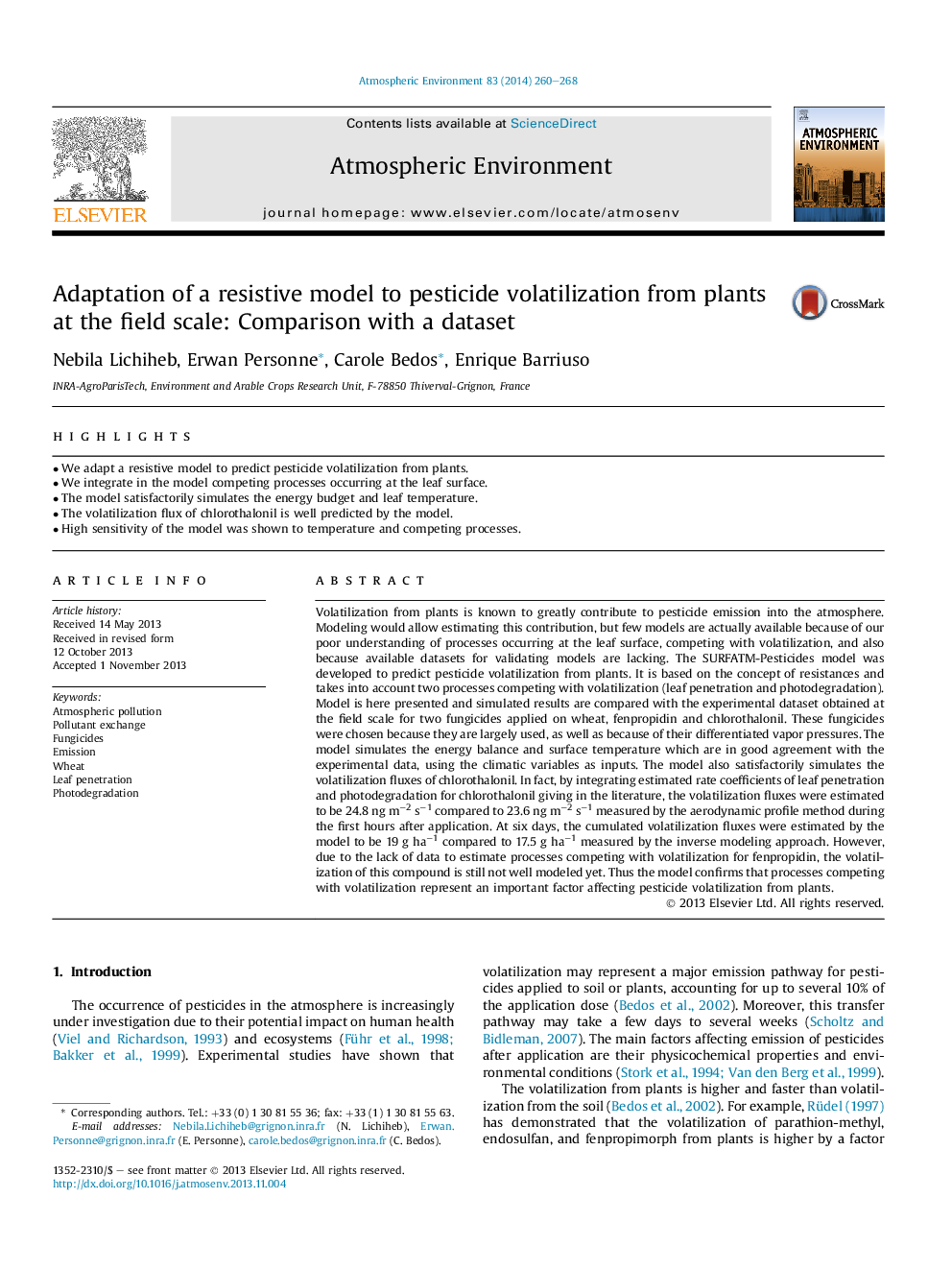| کد مقاله | کد نشریه | سال انتشار | مقاله انگلیسی | نسخه تمام متن |
|---|---|---|---|---|
| 6340985 | 1620388 | 2014 | 9 صفحه PDF | دانلود رایگان |
- We adapt a resistive model to predict pesticide volatilization from plants.
- We integrate in the model competing processes occurring at the leaf surface.
- The model satisfactorily simulates the energy budget and leaf temperature.
- The volatilization flux of chlorothalonil is well predicted by the model.
- High sensitivity of the model was shown to temperature and competing processes.
Volatilization from plants is known to greatly contribute to pesticide emission into the atmosphere. Modeling would allow estimating this contribution, but few models are actually available because of our poor understanding of processes occurring at the leaf surface, competing with volatilization, and also because available datasets for validating models are lacking. The SURFATM-Pesticides model was developed to predict pesticide volatilization from plants. It is based on the concept of resistances and takes into account two processes competing with volatilization (leaf penetration and photodegradation). Model is here presented and simulated results are compared with the experimental dataset obtained at the field scale for two fungicides applied on wheat, fenpropidin and chlorothalonil. These fungicides were chosen because they are largely used, as well as because of their differentiated vapor pressures. The model simulates the energy balance and surface temperature which are in good agreement with the experimental data, using the climatic variables as inputs. The model also satisfactorily simulates the volatilization fluxes of chlorothalonil. In fact, by integrating estimated rate coefficients of leaf penetration and photodegradation for chlorothalonil giving in the literature, the volatilization fluxes were estimated to be 24.8 ng mâ2 sâ1 compared to 23.6 ng mâ2 sâ1 measured by the aerodynamic profile method during the first hours after application. At six days, the cumulated volatilization fluxes were estimated by the model to be 19 g haâ1 compared to 17.5 g haâ1 measured by the inverse modeling approach. However, due to the lack of data to estimate processes competing with volatilization for fenpropidin, the volatilization of this compound is still not well modeled yet. Thus the model confirms that processes competing with volatilization represent an important factor affecting pesticide volatilization from plants.
Journal: Atmospheric Environment - Volume 83, February 2014, Pages 260-268
